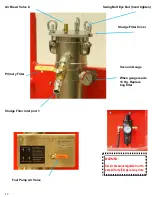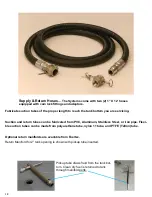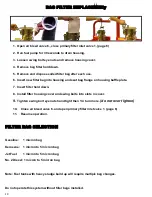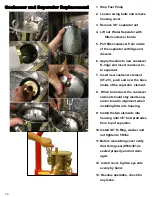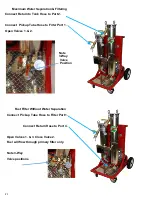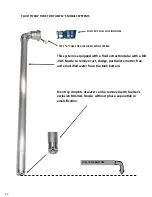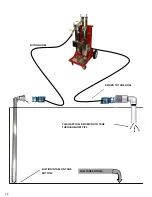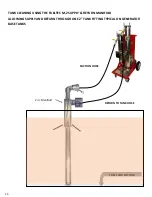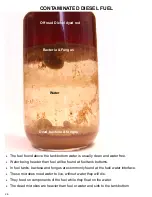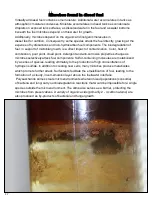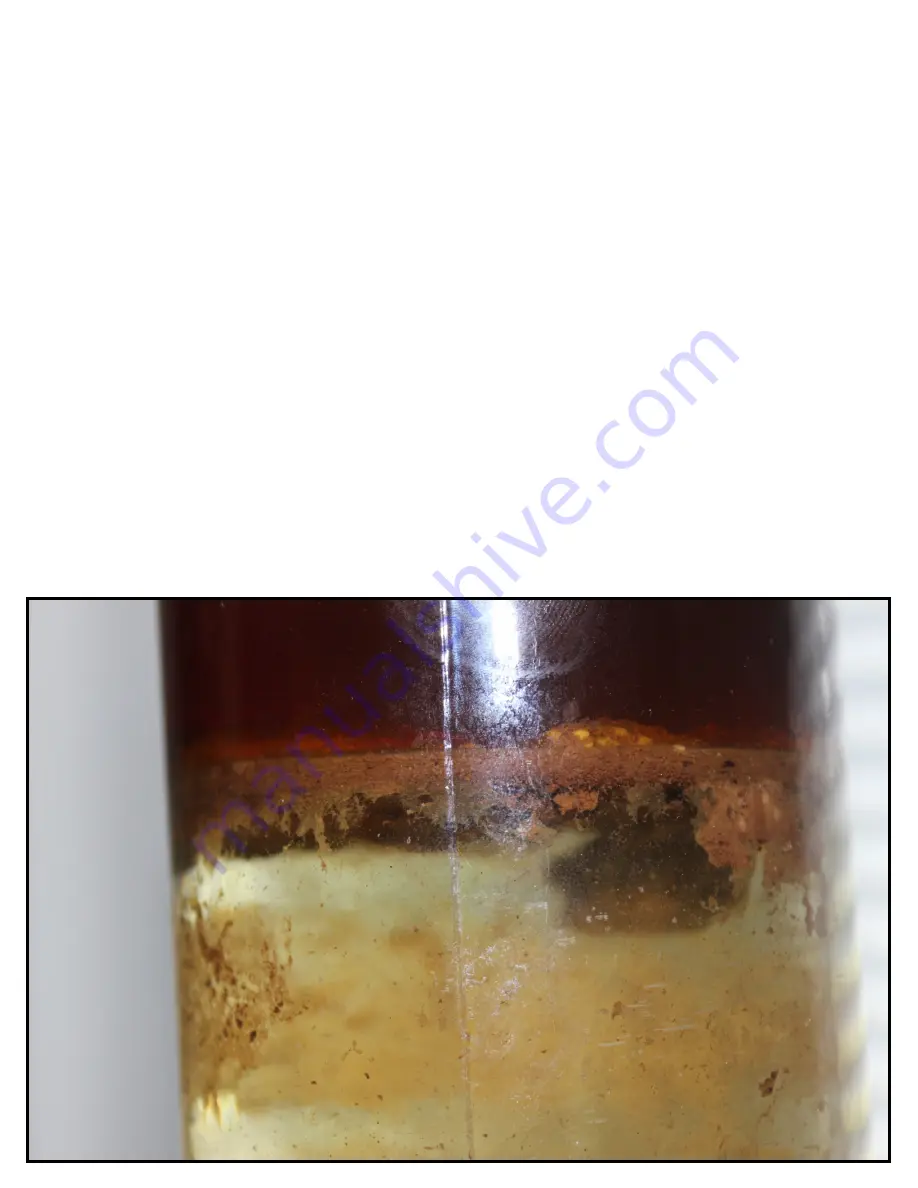
27
Microbes found in diesel fuel
Virtually all diesel fuel contains some moisture. Additional water accumulates in tanks as
atmospheric moisture condenses. Moisture accumulates in diesel tanks as condensate
droplets on exposed tank surfaces, as dissolved water in the fuel and as water bottoms
beneath the fuel microbes depend on this water for growth.
Additionally, microbes depend on the organic and inorganic molecules in
diesel fuel for nutrition. Consequently, some species attack the fuel directly, growing at the
expense of hydrocarbons and non
-
hydrocarbon fuel components. The biodegradation of
fuel, in support of microbial growth, is a direct impact of contamination. Color, heat of
combustion, pour point, cloud point, detergent and anti
-
corrosive properties change as
microbes selectively attack fuel components. Sulfur
-
containing molecules are metabolized
by a series of species, leading ultimately to the production of high concentrations of
hydrogen sulfide. In addition to creating new cells, many microbes produce metabolites
which promote further attack. Surfactants facilitate the emulsification of fuel, leading to the
formation of a cloudy, invert
-
emulsion layer above the fuel/water interface.
Polysaccharide slimes create microenvironments wherein mixed populations (consortia)
of bacteria and fungi carry out biodegradation reactions that would be impossible for a single
species outside the microenvironment. The slime also serves as a barrier, protecting the
microbes from preservatives. A variety of organic acids (primarily 2
-
4 carbon atoms) are
also produced as by
-
products of bacterial and fungal growth.





